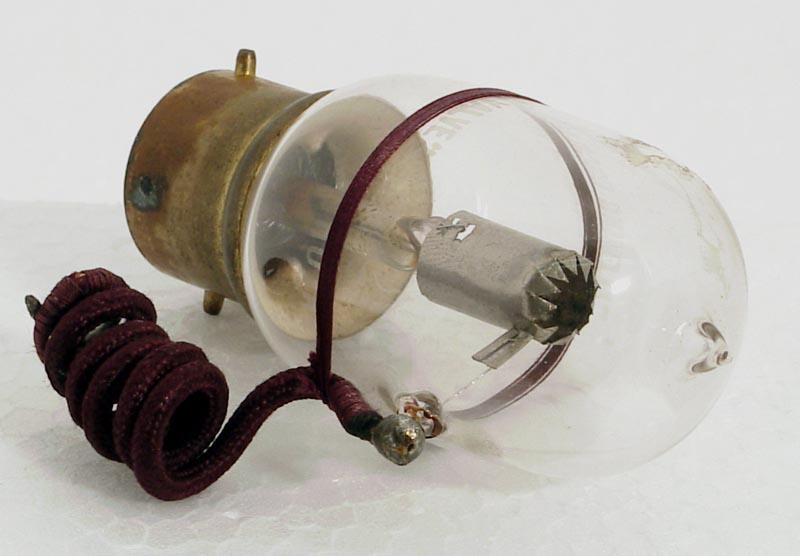|
As the earliest stages in the invention of the wireless valve were made by me at University College, London, between 1889 and 1904, it may interest some of those who are now listening to these remarks of mine by means of valve receivers, to have some short account of the beginnings of that invention.
In 1882 the electric incandescent lamp so familiar to us all, was perfected by Edison and Swan. The first lamp consisted of a carbon filament or thread enclosed in a glass bulb from which all the air was pumped out. When an electric current was sent through the thread it glowed with a brilliant light. It was soon found that the bulb became blackened on the inside as the valve was used, and the filament or thread was after a certain time burnt through at some place by excessive heating. In the course of my experience as scientific advisor of the Edison Electric Light Company, I noticed that in some lamps there was a clear line on the glass bulb on which no blackening took place, which indicated that the carbon particles had been shot of from the overheated point in the filament in straight lines. The undamaged half of the hairpin-shaped filament by intercepting this shower of carbon atoms caused a sort of shadow or line of no black deposit to be produced on the inner surface of the bulb. A little later on I found that these particles thus shot off were all electrified with so-called negative electricity, that is the kind of electricity produced by rubbing a stick of sealing wax with a bit of flannel.
At that time it seemed that these charged particles were atoms of carbon, but we did not know then that chemical atoms are built up of still smaller particles called electrons.
It used to be thought that atoms were not capable of being divided. The very word atom comes from two Greek works signifying not able to be cut up. The great discovery was, however, made about 1898 of 1899, by Sir Joseph Thomson, the present Master of Trinity College, Cambridge, that chemical atoms of matter are built up of still smaller atoms of electricity called electrons, and it was soon found that the incandescent filament of an electric lamp is sending out vast numbers of these little electrons.

The next step of invention was made in 1904, when I placed around the filament of an electric lamp a cylinder of metal sealed inside the bulb, and found that a current of negative electricity could be sent from the filament to the cylinder but not in the opposite direction. This at once gave us a means for converting the feeble but rapid to-and-fro motions of electricity in an aerial wire, which are setup when electric waves from a distant transmitting station strike the aerial wires, into a current of electricity all in the same direction by including in the circuit such a lamp with a cylinder round the filament. I therefore called the instrument a valve because it acts, as regards electricity, as a valve in a pump acts for air or water. It is now called a thermionic valve.
Subsequently to my invention of the two-electrode valve, De Forest, in America, introduced the grid or spiral of wire placed between the filament and the metal cylinder, which converted it into a so-called three-electrode valve. This enabled the valve to amplify electric oscillations as well as rectify or detect them. In its most recent types, which are the outcome of the work of many able inventors, the valve can perform three duties - it can detect electric vibrations, amplify or magnify them, and also create them, and it can truthfully be described as the master weapon of the radio engineer.
|